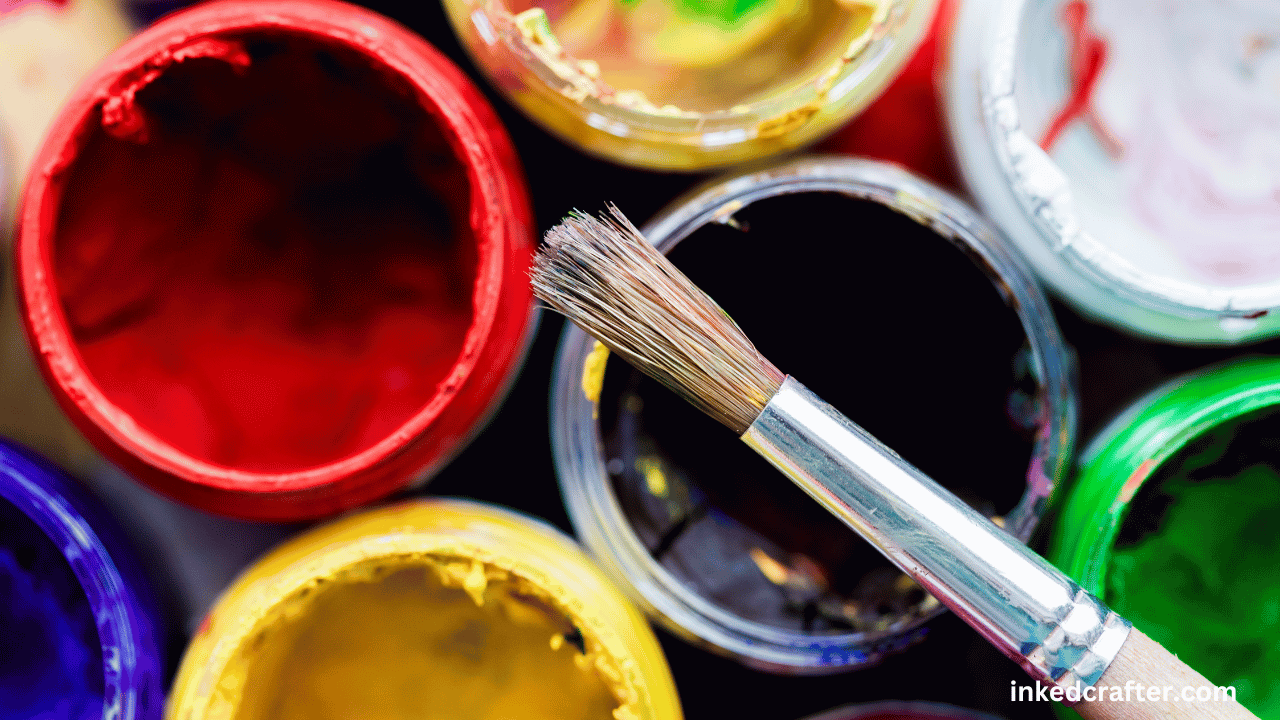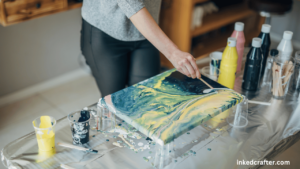Acrylic paints can be used for a lot of different things, which is why artists and makers love them. But if you’ve ever painted on plastic, you know how important it is to properly seal the paint so that it lasts and stays vibrant. We’ll show you how to fix acrylic paint on plastic step by step, so your work will last.

Contents
- 1 Understanding Acrylic Paint and Plastic
- 2 How should I seal a watercolor drawing that I put on plastic?
- 3 Preparing the Plastic Surface
- 4 Choosing the Right Sealant
- 5 Applying the Sealant
- 6 Drying and Curing Time
- 7 Additional Tips and Tricks
- 8 Common Mistakes to Avoid
- 9 Conclusion
- 10 FAQs
- 11 Q: Can I use regular acrylic paint on plastic surfaces?
- 12 Q: How long does it take for the sealant to dry completely?
- 13 Q: Can I use a spray sealant for sealing acrylic paint on plastic?
- 14 Q: Will the sealant alter the color of my acrylic paint?
- 15 Q: How long will the sealant protect my acrylic paint on plastic?
Understanding Acrylic Paint and Plastic
Acrylic paint is water-based and dries quickly, so it can be used on many materials, even plastic. But plastic surfaces are smooth, which can make it hard for things to stick. It is very important to know how acrylic paint and plastic work in order to get the best results.
How should I seal a watercolor drawing that I put on plastic?
Clean the Surface: Make sure the plastic is clean and free of any dust, dirt, or oils before you seal it. Clean it well with water and a light soap solution. After you rinse it, let it dry all the way.
Prepare the acrylic paint. If you just finished the painting, let it dry all the way through. Depending on how thick the paint coats are, this usually takes between 24 and 48 hours.
Choose a Sealer: Pick a sealer that is made to be used on acrylic works. You should look for sealers that can be used on both watercolor paint and plastic. They can be bought online or in art supply shops.
Apply the Sealer: To apply the sealer, follow the maker’s directions. Sometimes, you have to shake the sealer really well before you use it. A soft-bristled brush or a foam brush should be used to spread a thin, even layer of sealer over the whole picture. Make sure you don’t put on too much sealer, because that can make it cloudy or sticky.
Let Dry: After putting on the first coat of sealer, follow the manufacturer’s guidelines and let it dry fully. It takes about 24 hours most of the time. If you need to, add more coats of sealer and let each one dry completely before adding the next one.
Sanding Between Coats: If you want a very smooth finish, you can use fine-grit sandpaper (around 400–600 grit) to lightly sand the surface between coats of sealer. This helps get rid of any flaws and makes sure that the layers stick together better.
Final set time: After putting on the last coat of sealer, let the painting set for as long as the maker says to. This makes sure that the sealer cures completely and protects the acrylic work as much as possible.
Be careful when you use or show your acrylic art on plastic. It should be ready to do so once the sealer has fully dried. But you should still be careful not to scratch or damage the surface when you touch it.
Preparing the Plastic Surface
Before applying acrylic paint, it’s essential to prepare the plastic surface properly. Clean the surface thoroughly to remove any dirt, dust, or grease that could interfere with adhesion. You can use soap and water or isopropyl alcohol for this purpose. Additionally, lightly sanding the surface can help create a better bond for the paint.
Choosing the Right Sealant
Selecting the appropriate sealant is key to protecting your acrylic paint on plastic. Look for sealants specifically designed for use on plastic surfaces. Polyurethane and clear acrylic sealants are popular choices due to their durability and transparent finish, which won’t alter the paint’s color.
Applying the Sealant
Once you’ve painted your plastic surface with acrylics and allowed it to dry completely, it’s time to apply the sealant. Use a clean brush or foam brush to apply a thin, even coat of sealant over the painted area. Be sure to follow the manufacturer’s instructions regarding drying time and application techniques.
Drying and Curing Time
After applying the sealant, allow sufficient drying and curing time for the best results. While the surface may feel dry to the touch within a few hours, it’s essential to give it ample time to cure fully. This process can take anywhere from 24 hours to several days, depending on the type of sealant used and environmental factors like temperature and humidity.

Additional Tips and Tricks
- Avoid Overworking the Sealant: Apply the sealant in thin layers to prevent drips or brush marks.
- Consider Using More Than One Coat: To get extra protection, use more than one thin coat of sealant and let each one dry completely before adding the next.
- Test in a Small Area: Make sure the sealer works with the acrylic paint and plastic in a small, hidden area before covering the whole surface.
Common Mistakes to Avoid
- Skipping Surface Preparation: Neglecting to clean and prepare the plastic surface can result in poor adhesion and premature peeling of the paint.
- Using the Wrong Sealant: Not all sealants are suitable for use on plastic surfaces. Using the wrong type of sealant can lead to cracking, yellowing, or other undesirable effects.
- Applying Too Thickly: Thick layers of sealant can take longer to dry and may result in a cloudy or uneven finish.
Conclusion
Immediately following the application of acrylic paint to plastic surfaces, it is imperative to adequately seal the surface in order to improve its longevity and safeguard it against wear and strain. Effective sealing can be achieved by thoroughly adhering to the directions provided by the manufacturer and making use of an appropriate sealer.
In order to ensure proper ventilation throughout the application process, it is essential to use either a spray or a brush-on sealer. It is helpful to conduct preliminary testing in a small area to ensure that the sealant will not alter the color of the paint.
The brilliance and integrity of acrylic paint on plastic can be preserved for many years to come if it is properly sealed and cared for.
FAQs
-
Q: Can I use regular acrylic paint on plastic surfaces?
A: Yes, acrylic paint can adhere to plastic surfaces with proper surface preparation and sealing.
-
Q: How long does it take for the sealant to dry completely?
A: Drying time varies depending on the type of sealant and environmental conditions but typically ranges from 24 hours to several days.
-
Q: Can I use a spray sealant for sealing acrylic paint on plastic?
A: Yes, spray sealants can be used, but be sure to apply them in a well-ventilated area and follow the manufacturer’s instructions carefully.
-
Q: Will the sealant alter the color of my acrylic paint?
A: Most sealants dry clear and should not significantly alter the color of the acrylic paint. However, it’s always a good idea to test in a small area first.
-
Q: How long will the sealant protect my acrylic paint on plastic?
A: With proper application and care, the sealant can provide long-lasting protection for your acrylic paint on plastic, preserving its vibrancy and durability for years to come.








